Is the Sun Setting on Rhinos?
Widespread poaching is decimating rhino populations. Join us in the fight to save this species.
By Alix Morris
.
A Dark Night in October
October 10th, 2014: It was a warm evening in the North West Province in South Africa. Wildlife reserve managers had completed their daily patrols and were settling in for the night.
On the other side of the park, beyond their earshot, shots of gunfire cracked.
At dawn, Earthwatch researcher Lynne MacTavish began patrolling the reserve. As she reached the perimeter of the park, she saw that a piece of electric fence had been torn down.
Within minutes, her team located the first rhino victim. Cheeky Cow’s face had been hacked by machetes, her horn stolen from her. The reserve managers quickly realized that the female she stayed with, Winnie, was also missing. Lynne, who is the daughter of the Chief Warden and who had grown up on the reserve, went ahead to look for her. In the distance, she saw Winnie—then 16 months pregnant. “She survived,” she thought to herself as she ran towards her.
Then she saw the vultures.
Lynne knew they’d have to notify the police, summon a helicopter, secure the crime scene, and call in the forensics team. But for 10 minutes, she couldn’t move. She lay against Winnie, her arms wrapped around the rhino as she tried to say goodbye.
.

Lynne rests beside Winnie, a pregnant rhino that had been killed for her highly valuable horn
.
I’d seen that rhino being born, I saw her grow up…and I knew she was pregnant. As she lay there, I knew there was a fully formed calf inside of her. Not only had they killed her, but her calf, and potentially another 50 rhinos if you take what could have been bred from those rhinos.
— Lynne MacTavish
.
In this emotional video, Lynne MacTavish speaks to staff during an Earthwatch conference as she recounts the loss of two rhinos at her park that had been brutally killed for their horns.
.

Earthwatch staff speak with Lynne MacTavish about the rhino poaching crisis in South Africa and the urgent need for volunteer support.
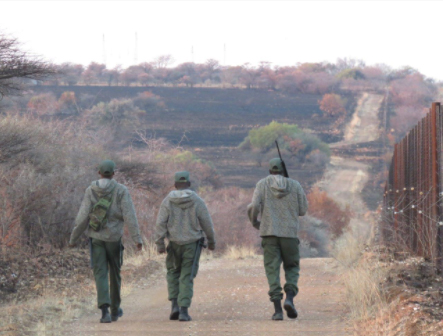
Reserve managers conduct evening fence patrols.
.
Earthwatch on the Scene
Less than a month after that dark October evening—with the events still fresh in her mind—Lynne traveled to Boston, Massachusetts with Dr. Dawn Scott, an Earthwatch scientist and Lynne’s research partner, for a conference celebrating conservation research and the need for citizen science. Dawn and Lynne had been working together for years on a prior Earthwatch scavenger study in South Africa. During a session break, Dawn shared Lynne’s story with us and asked if we would consider supporting a rhino project at this reserve in South Africa. Our collective answer was not if Earthwatch would support it, but how soon we could get it up and running.
The severity of the situation was clear. We felt a mission-critical responsibility to do whatever we could to conserve these threatened animals, and support the researchers who are dedicating their lives to protecting them.
Soon thereafter, the Earthwatch team went to work and was able to secure a generous donation from the Richard Lounsbery Foundation that supported the launch of the new project. Not only that, the funding enabled the field team to hire additional research assistants and purchase a new vehicle to expand the reach and frequency of rhino patrols. The wheels were in motion.
.
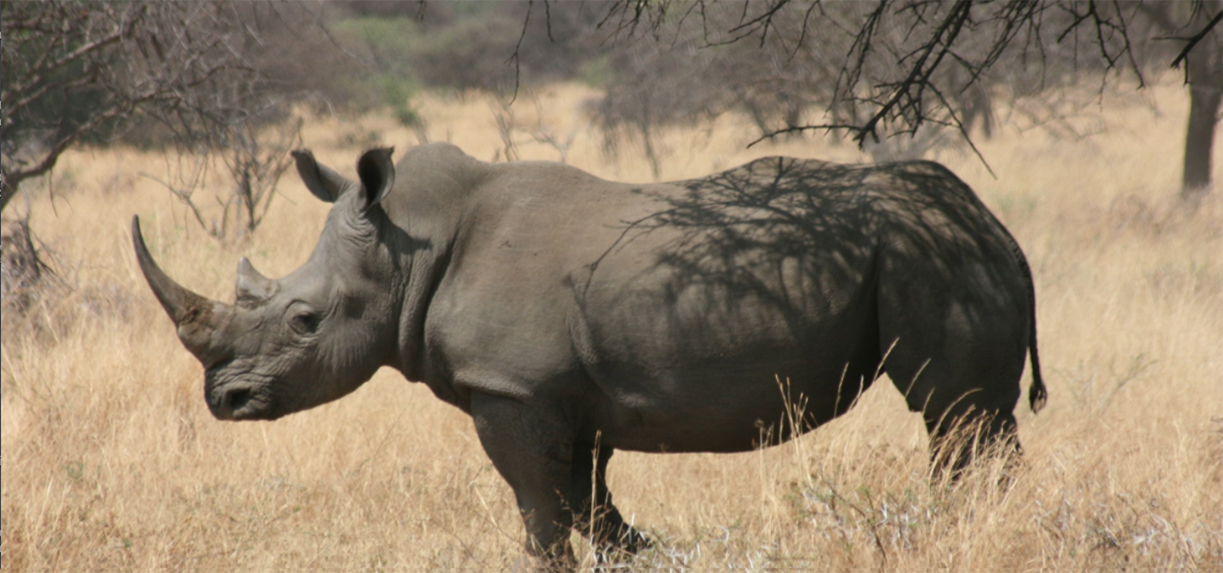
.
A Horn of Gold
Back in South Africa, reserve managers worried that the park had been identified as a rhino poaching target. They were concerned that poachers would be back to pick off the remaining animals, one by one. The solution, in their minds, was clear: to save the remaining rhinos, they had no choice but to surgically remove their highly valuable horns. Rhino horn is reportedly worth more than gold in black markets in Southeast Asia, where it is used as a status symbol as well as in traditional medicines.
Dehorning is a complex, stress-inducing procedure for rhinos, and in some cases can be fatal. But for the rhinos in this park, it seemed to be their best, and perhaps only, chance for survival. In removing the horns, the team hoped to remove the incentive for poaching.
.
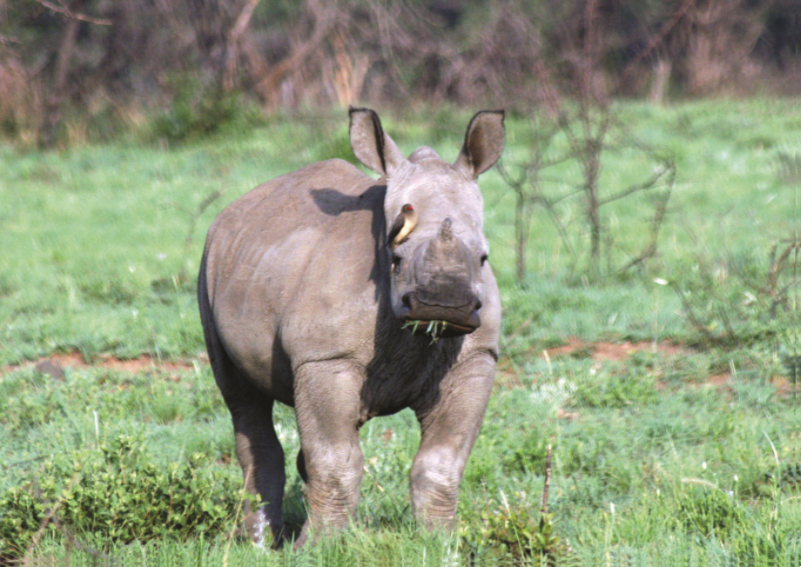
Earthwatch is studying the complex relationship between rhinos and their environment as well as the effects of dehorning on rhino behavior.
.
Scientists don’t yet know what effects dehorning have on rhino behavior within a population – how does it impact their ability to defend themselves and their young from predators? Does it change their interactions with other species? Park managers are reluctant to recommend this as a protection measure for other reserves without knowing the true effects of dehorning on the population.
The research team has other questions as well. The loss of a rhino is likely to have critical effects on the environment, as it can impact the plants and animals that depend on rhino grazing and protection services. But what are these effects, exactly, and how can they be used to help protect this species in increasing danger of extinction?
This Earthwatch study will soon help to answer these critical questions as quickly as possible in order to provide policy makers with the data needed to implement much-needed rhino protection plans.
.
.
Join the Fight
Dr. Dawn Scott highlights the urgency of the rhino crisis and the need for volunteer support on the ground.
.
South Africa is home to three-quarters of the world’s rhino population. The situation is dire: if poaching continues at its current rate, rhinos may become extinct within the next 20 years.
Dawn, Lynne, and their team are in the trenches in South Africa, engaged in the most challenging battle of their lives. But they can’t protect these animals on their own. They need support on the ground—and there is no group better equipped to handle this responsibility than Earthwatch volunteers.
In the heart of South Africa, volunteers will be a part of one of the first studies to look at services rhinos provide to their larger ecosystem, as well as the effects of dehorning on rhino behavior. Help park managers and policy makers to better understand the critical importance of this species so as to reduce the risk of poaching in the region.
From monitoring the behavior of rhinos on the ground to surveying bird and mammal species to assess their abundance, volunteers will conduct a variety of research activities to help this team answer critical questions to conserve rhinos globally. Through this research, the team hopes to demonstrate that rhinos are much more valuable alive, than dead.
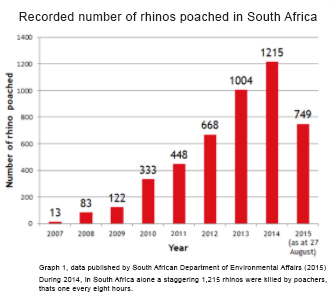
Graph courtesy of Save the Rhino (citing 2015 data from the South African Department of Environmental Affairs).
.
.
Join Earthwatch in the fight to protect rhinos and other endangered species around the world. Your support is crucial.
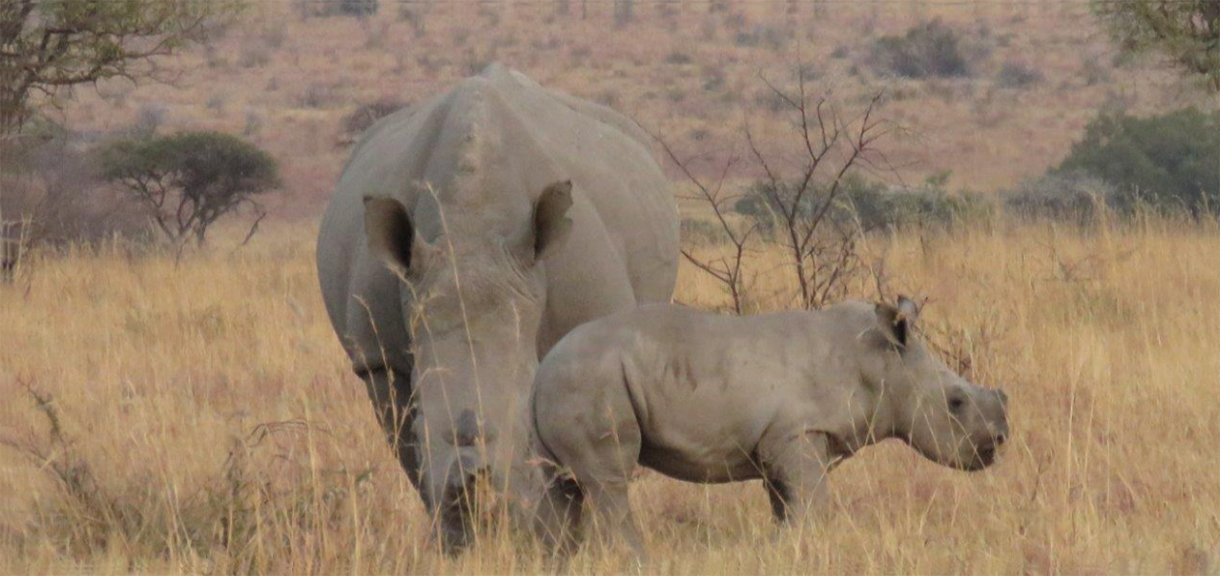
A new rhino calf that Earthwatch named “Mac” (after the MacTavish family) rests beside its mother in the reserve.
.
What's In a Name?
Nearly a year after the devastating events of October 2014, Earthwatch staff received some good news from Lynne and her team. A healthy rhino calf had just been born in the reserve. To express their gratitude for the support they’d received from Earthwatch, Lynne asked Earthwatch staff to name the rhino. Nearly immediately, we agreed on the perfect name.
Lynne MacTavish’s family has worked tirelessly to manage the reserve and to protect all of the animals from threats that include poaching. They have fought for the protection and conservation of so many African species, from the massive and iconic rhino, to the smallest of injured hedgehogs. They have committed their lives to wildlife conservation and have inspired countless Earthwatch volunteers to do the same. There is no more deserving name for the calf than their own.
So welcome, Mac, to a reserve we’re thrilled you can call home.
.

.
Get Involved with Earthwatch
Join Lynne, Dawn and their team on the Conserving Rhinos in South Africa expedition and help us to protect this iconic species.
A gift of any size helps Earthwatch to carry out this critical work to protect endangered species.
.
Sign up for the Earthwatch Newsletter
Be the first to know about new expeditions, stories from the field, and exciting Earthwatch news.